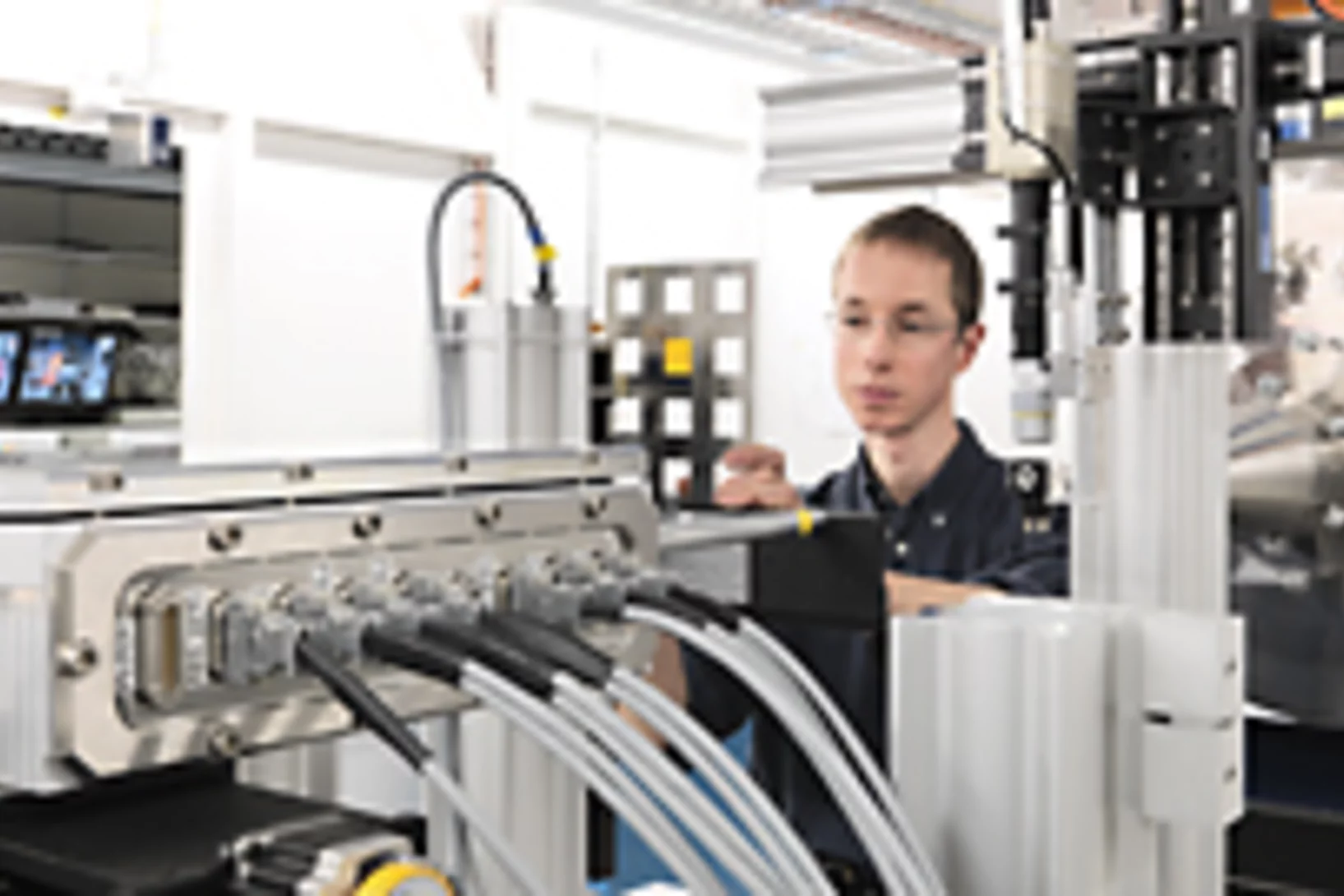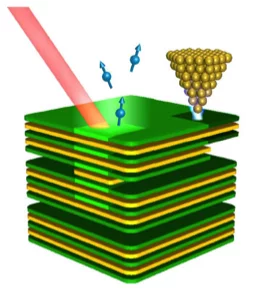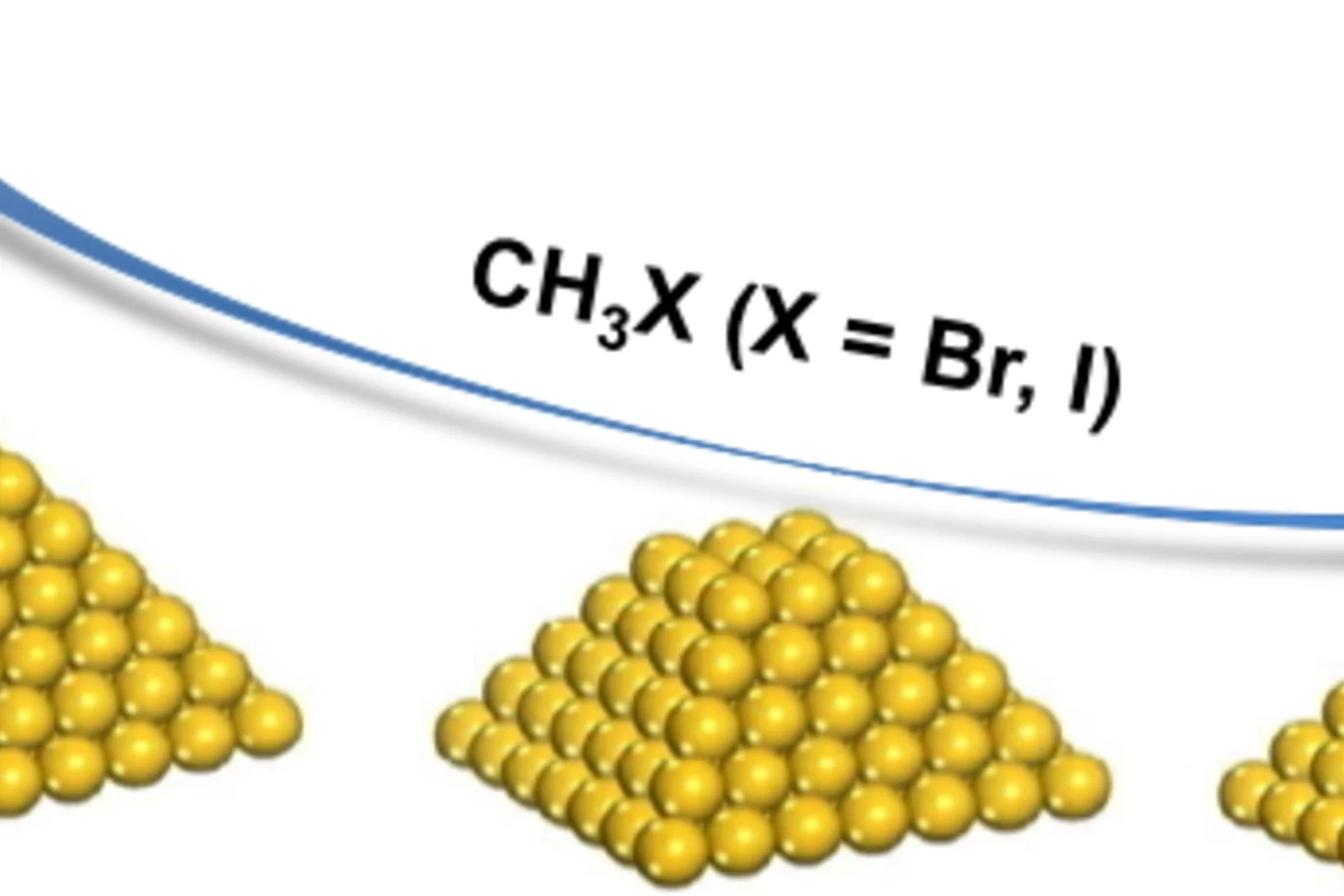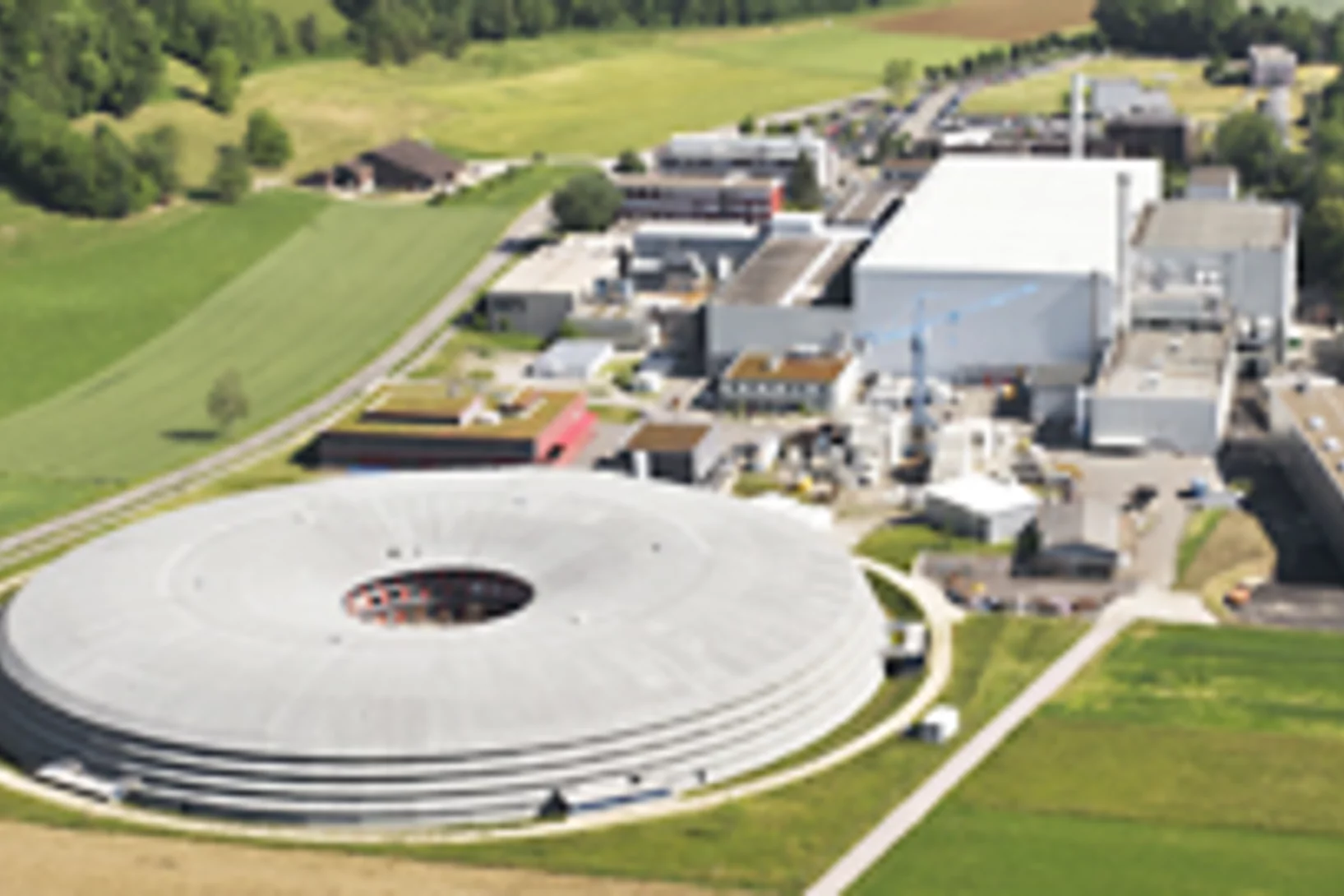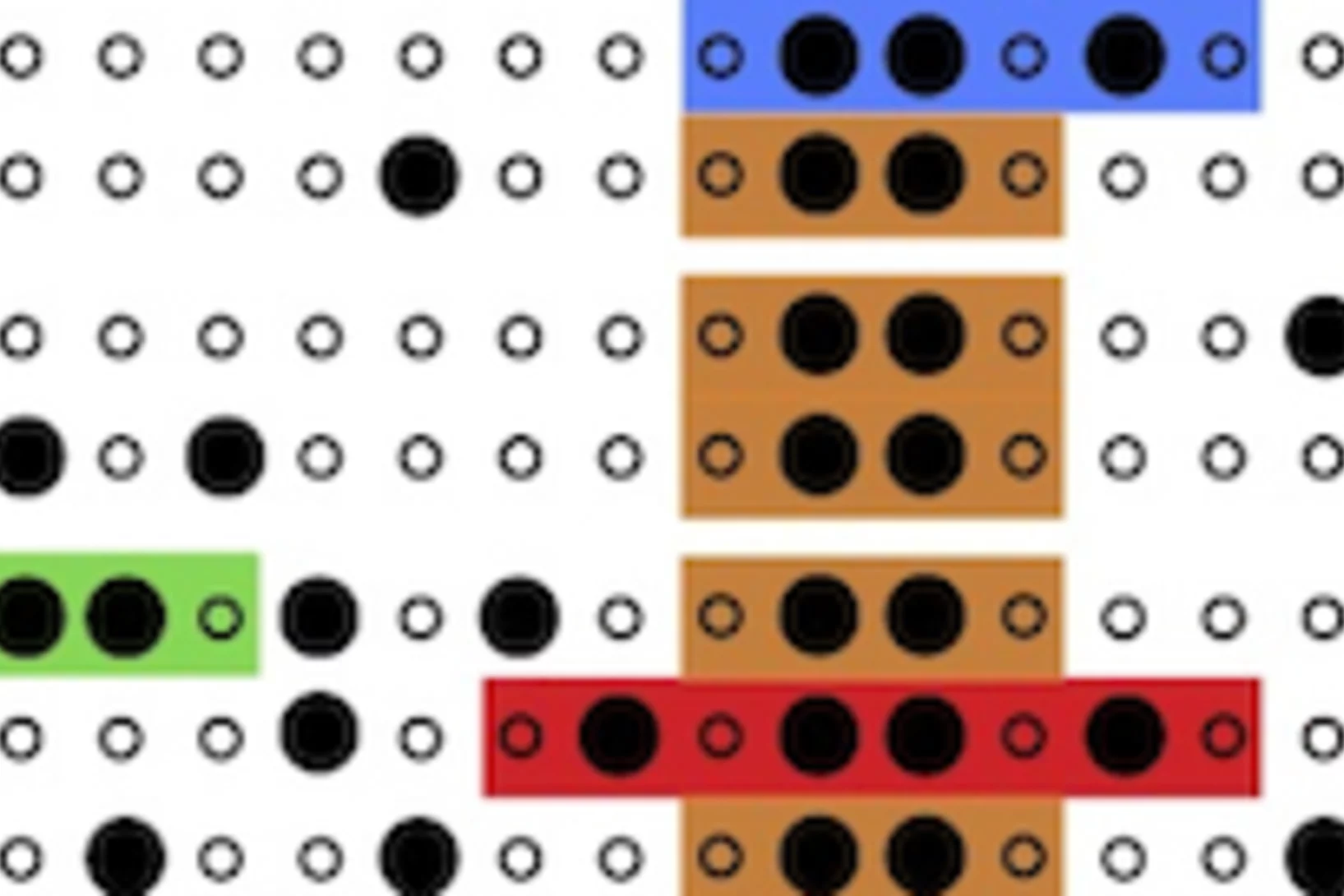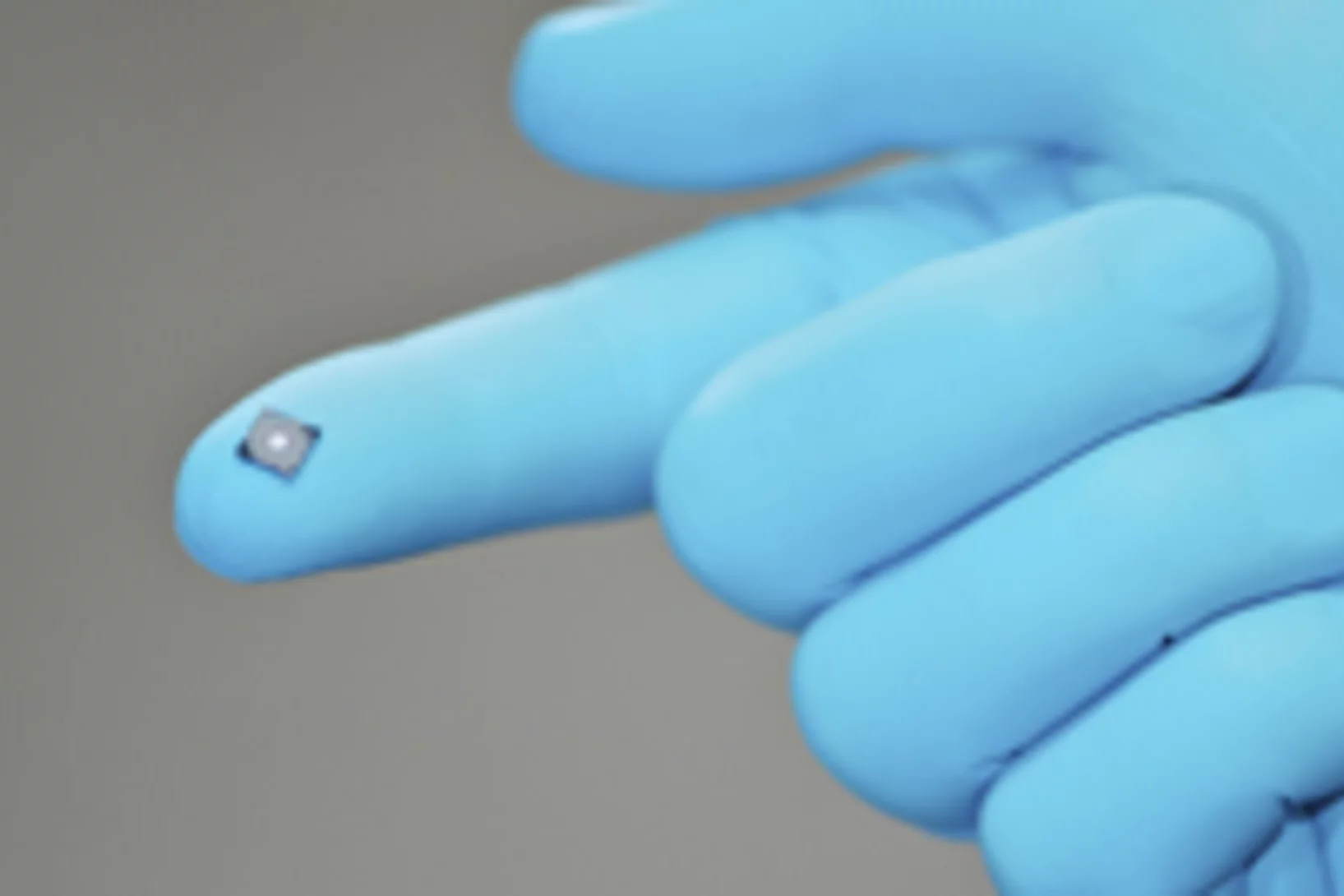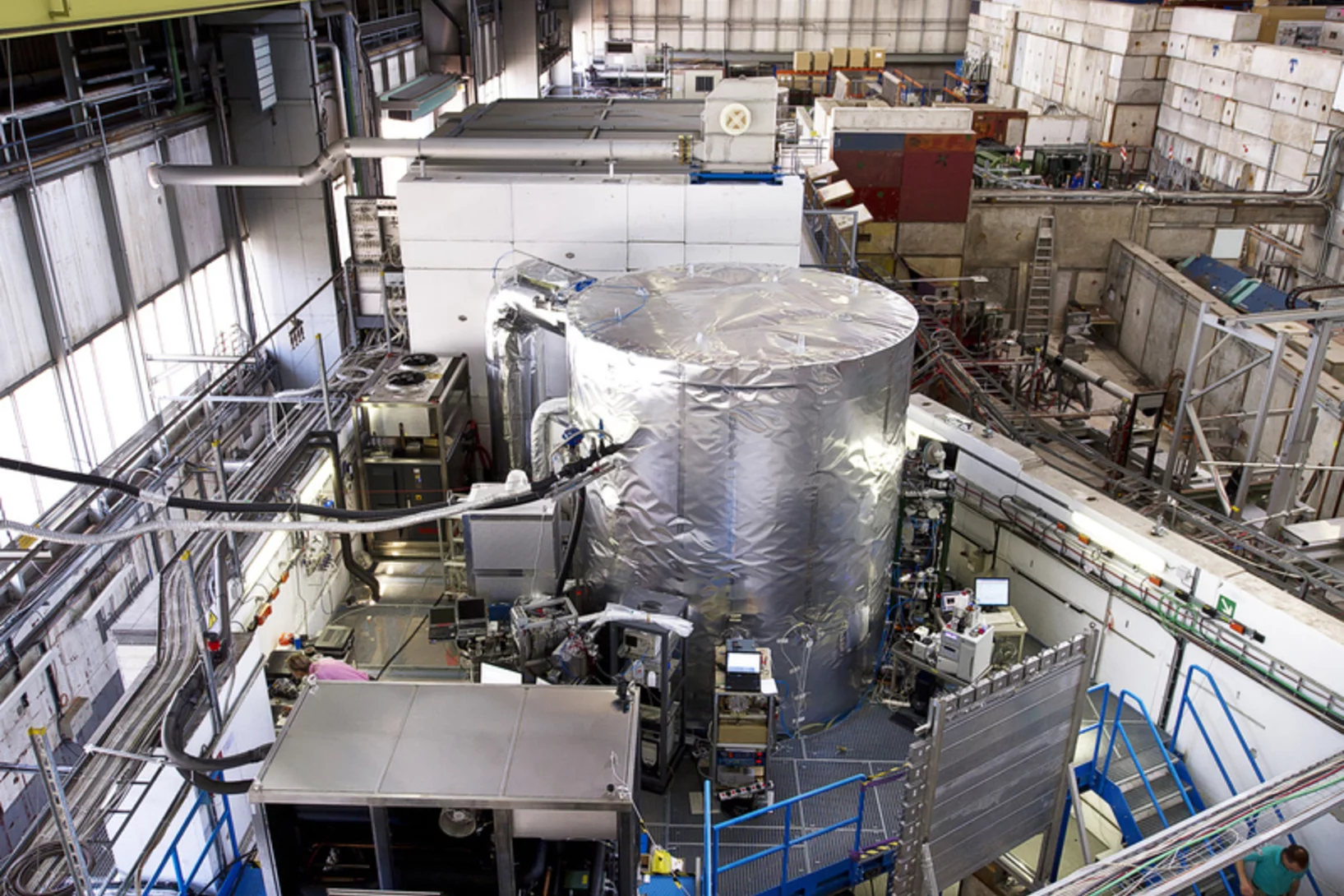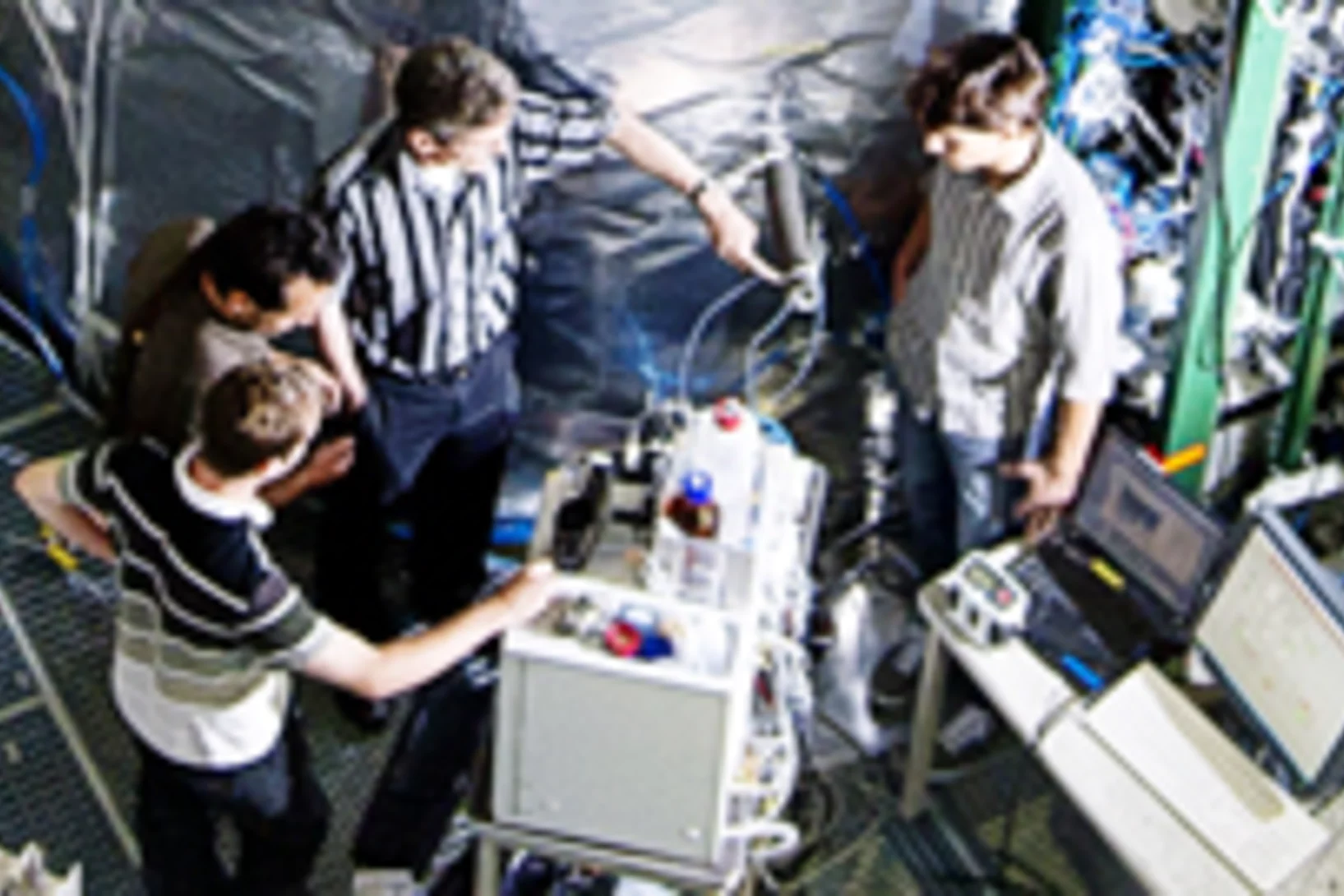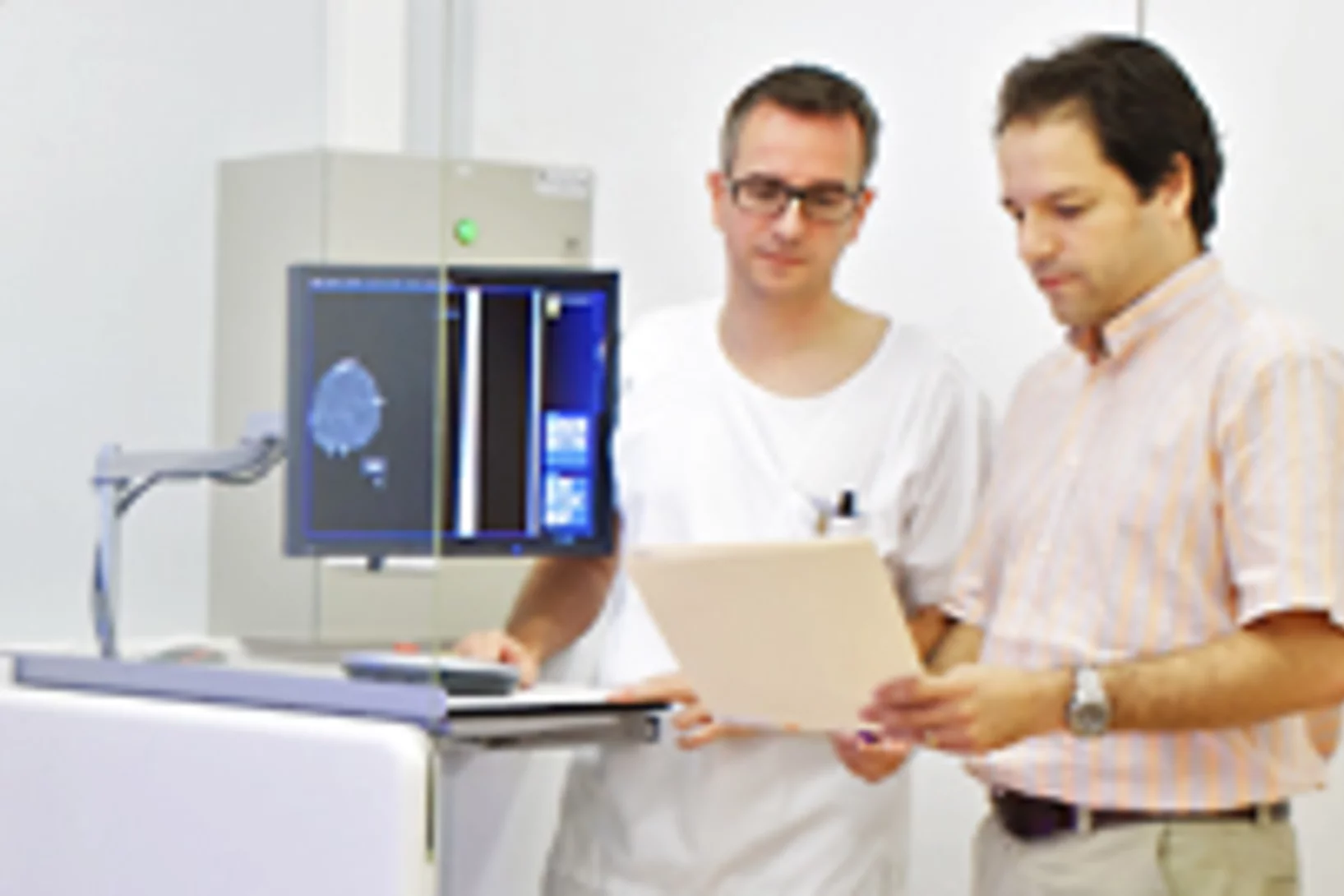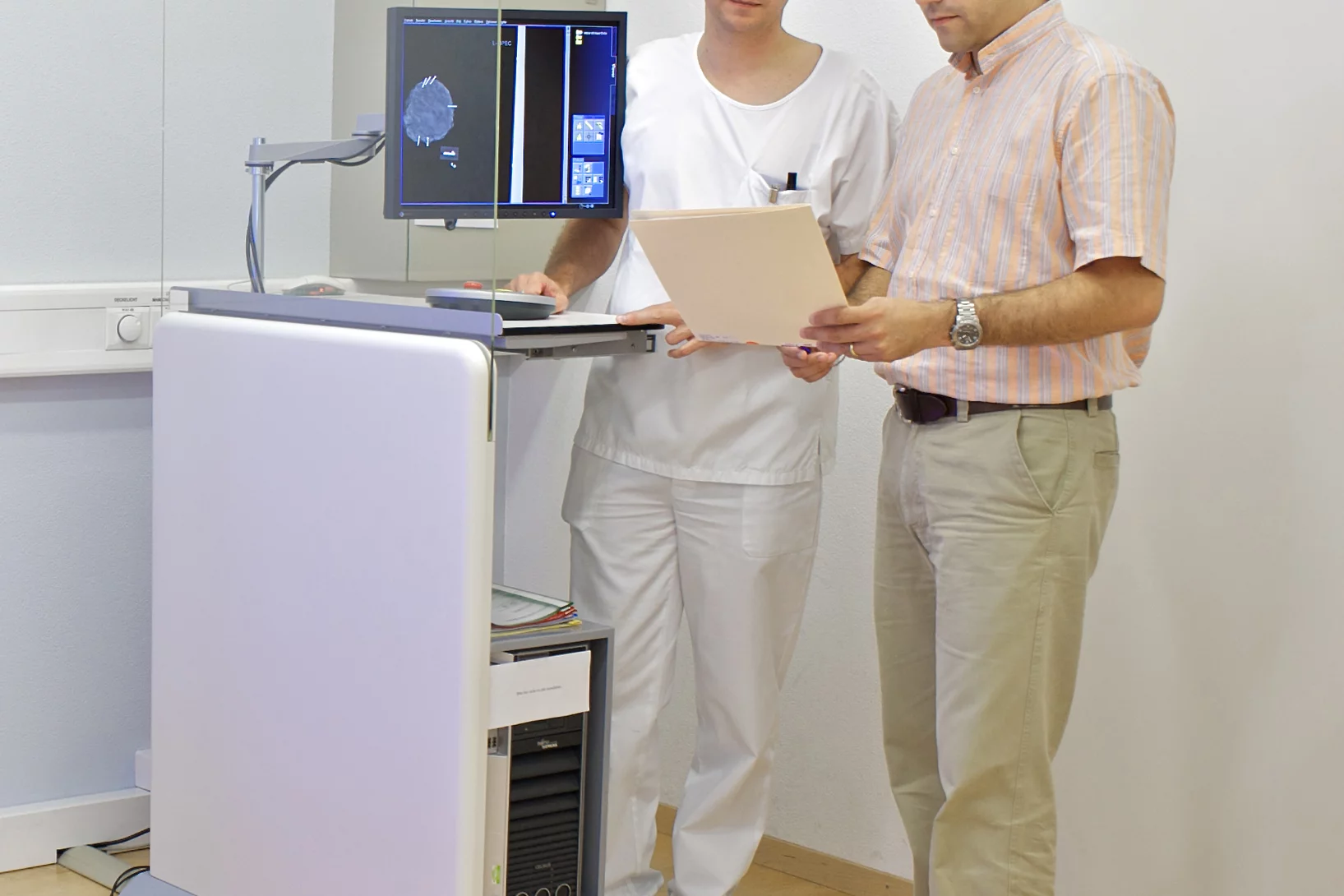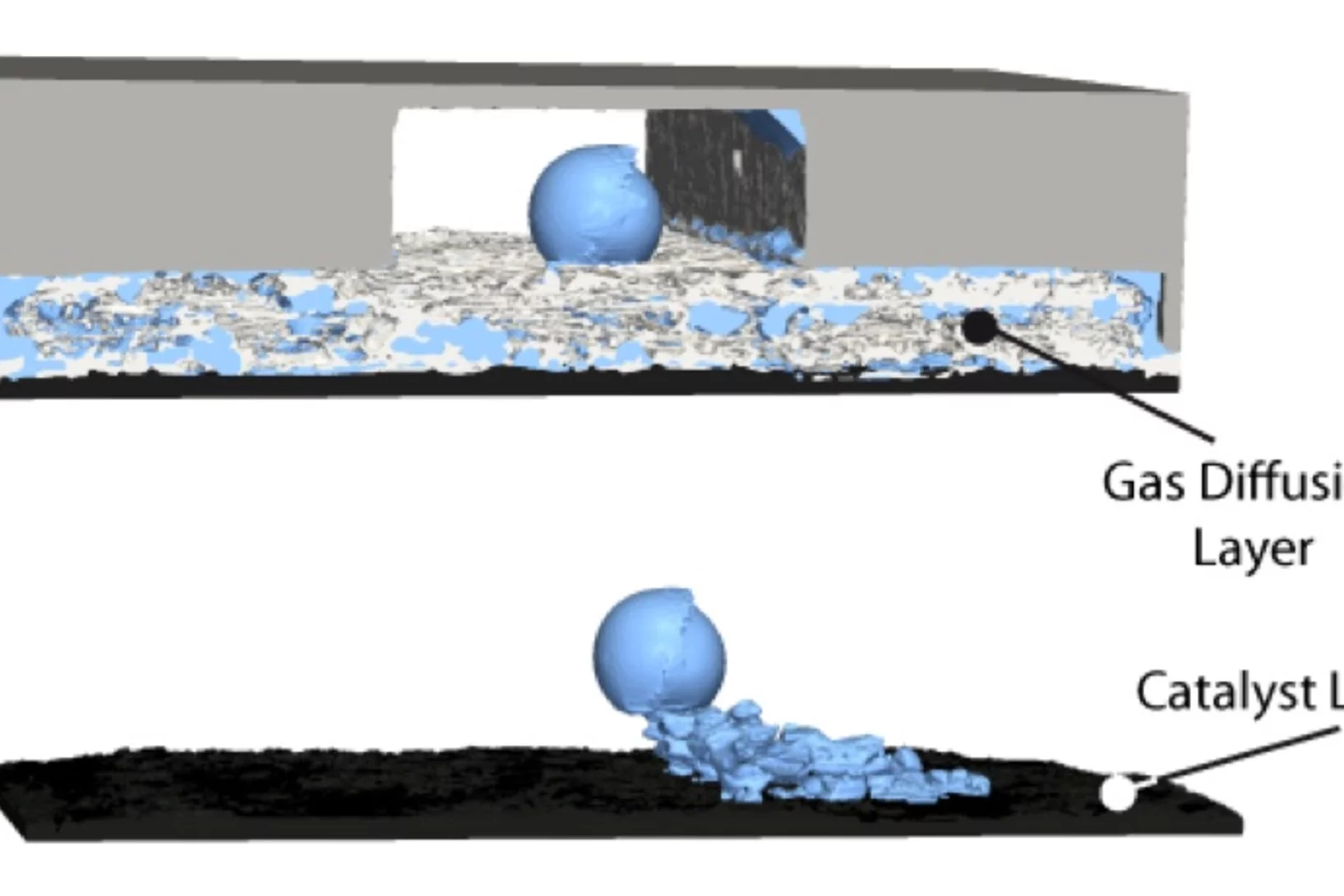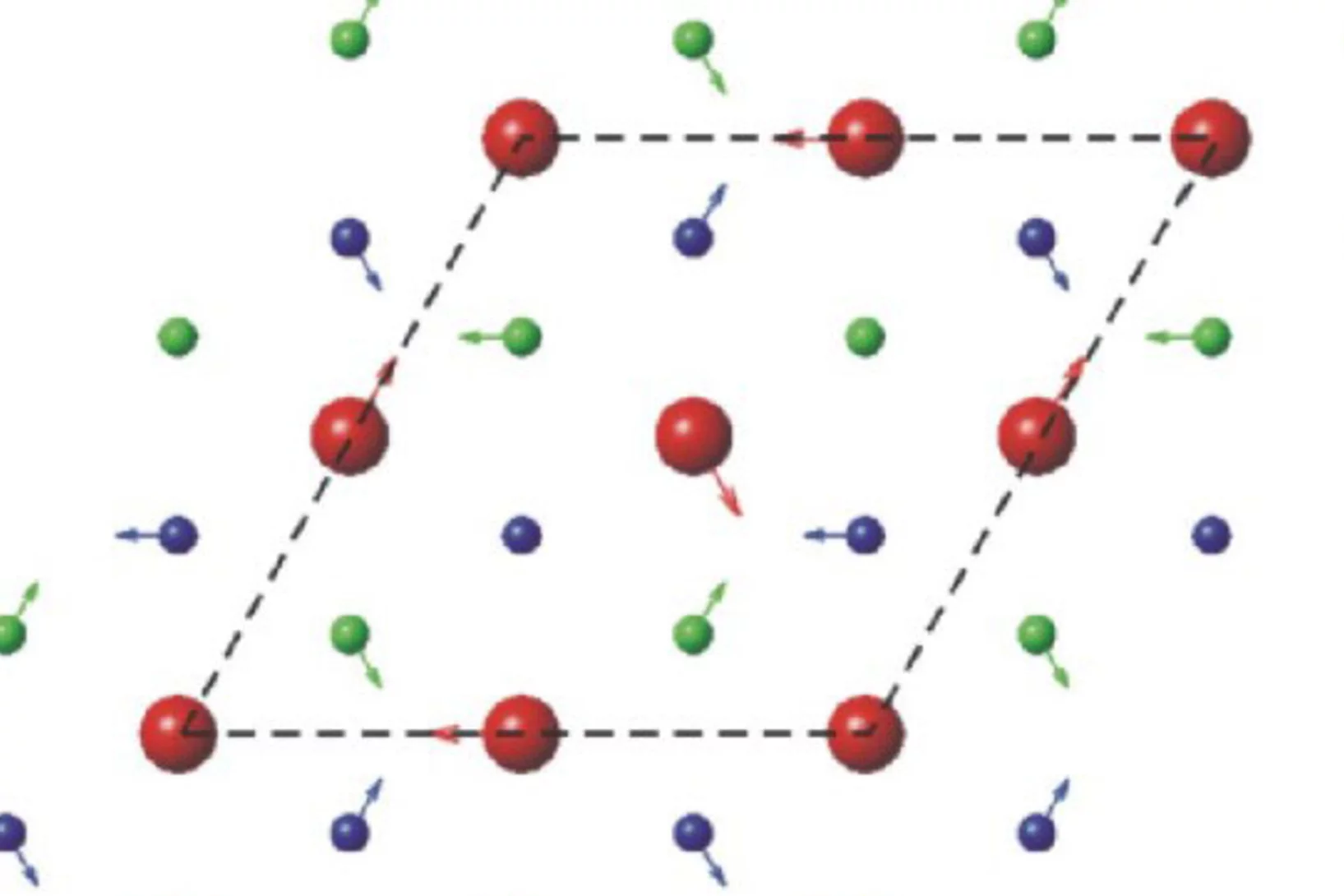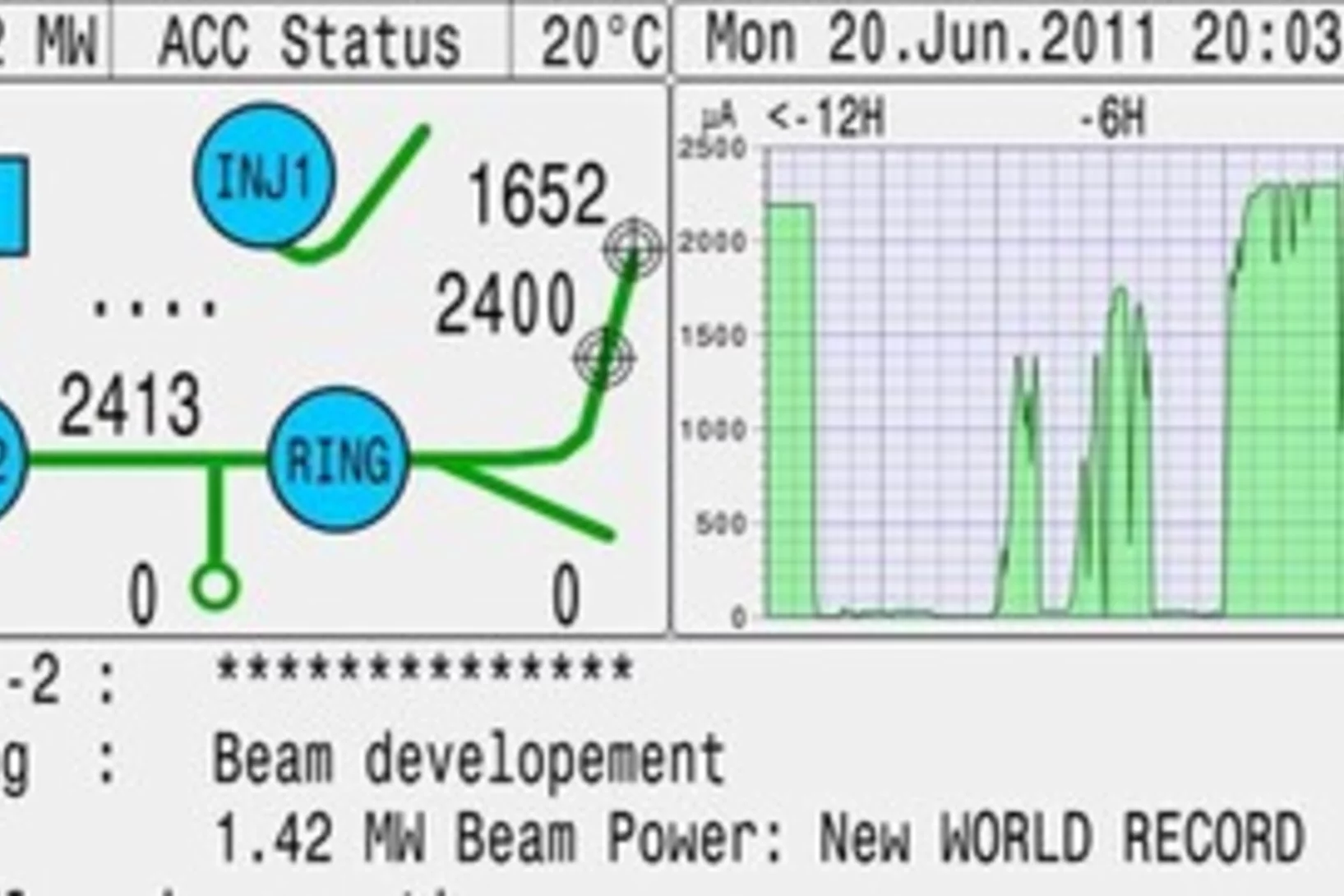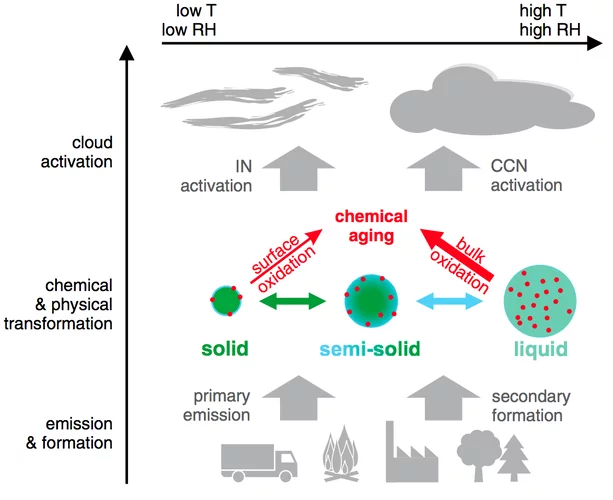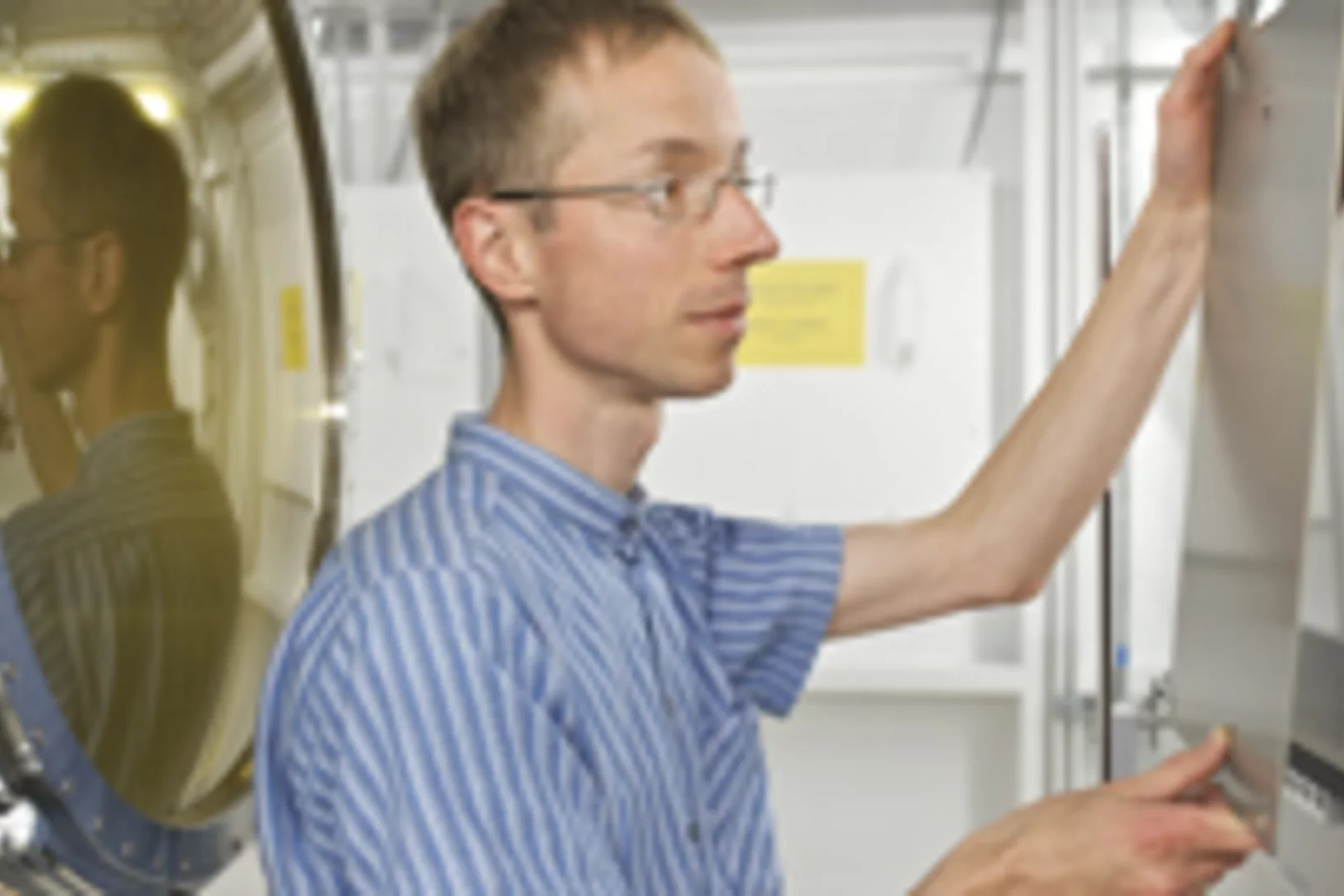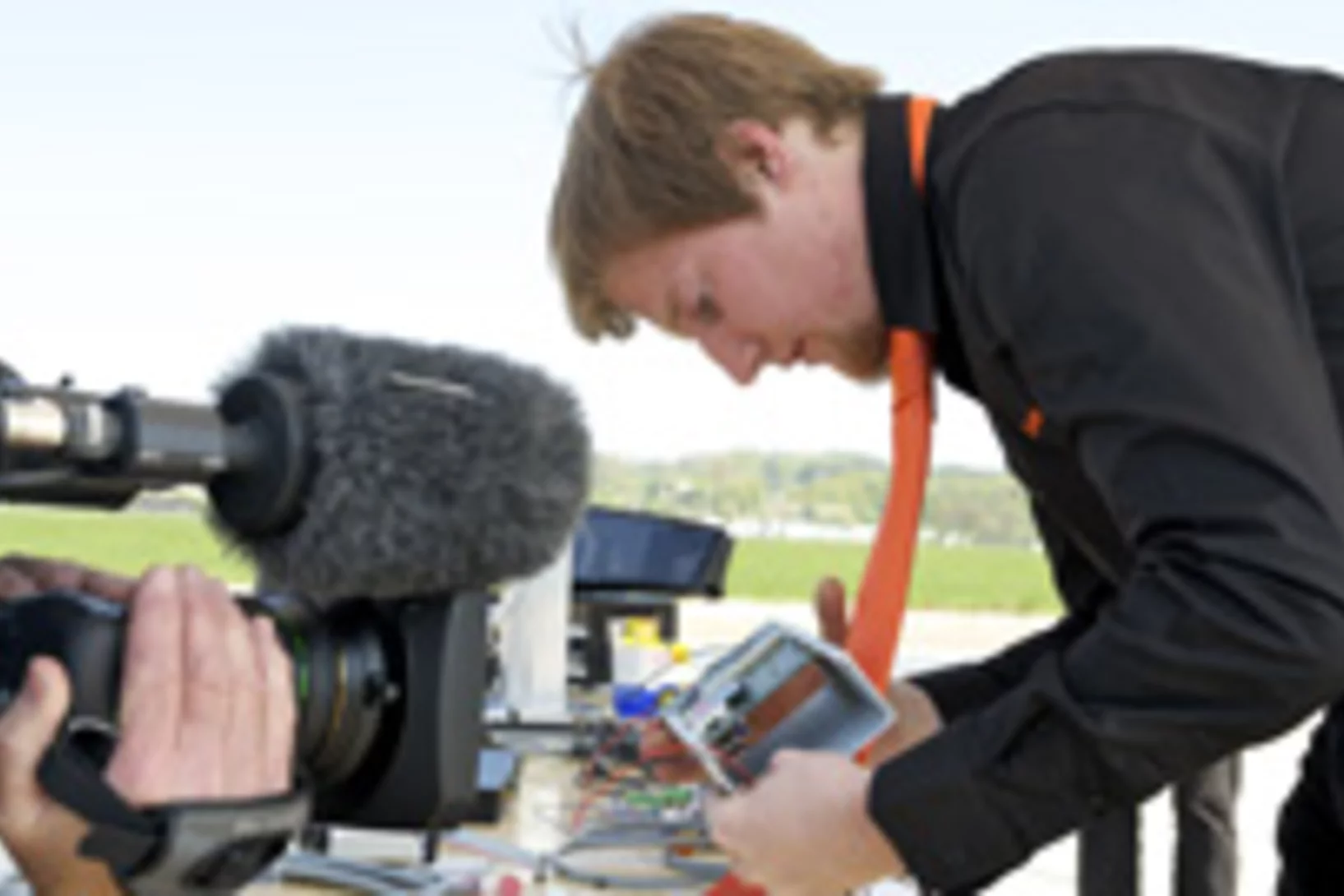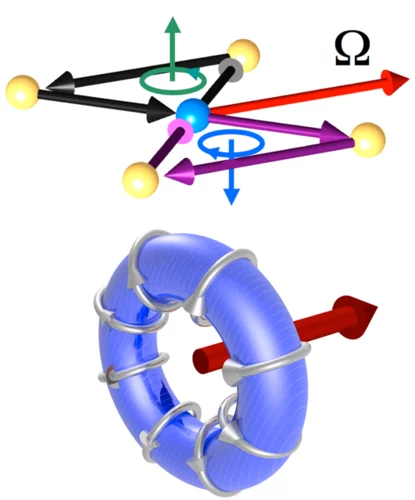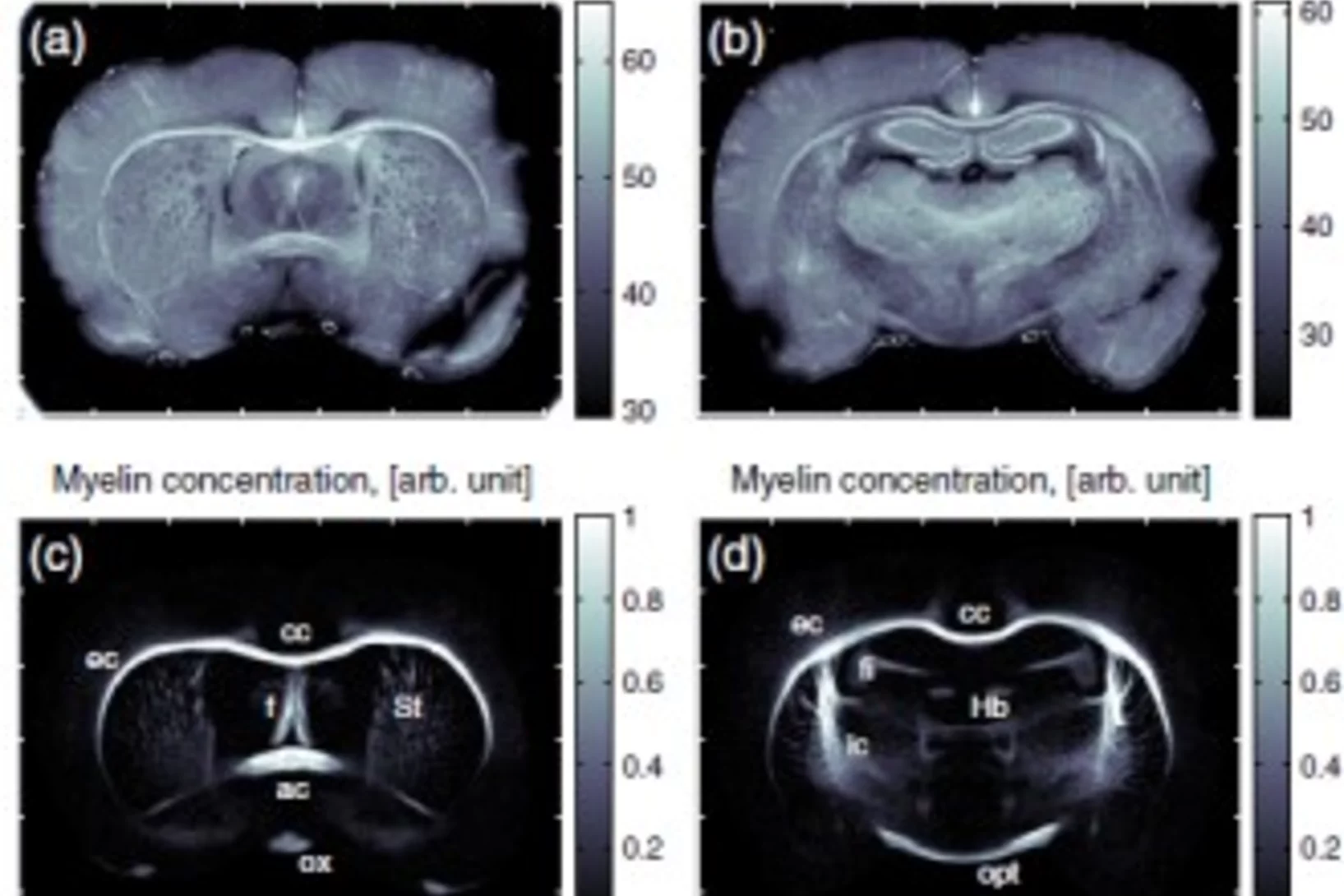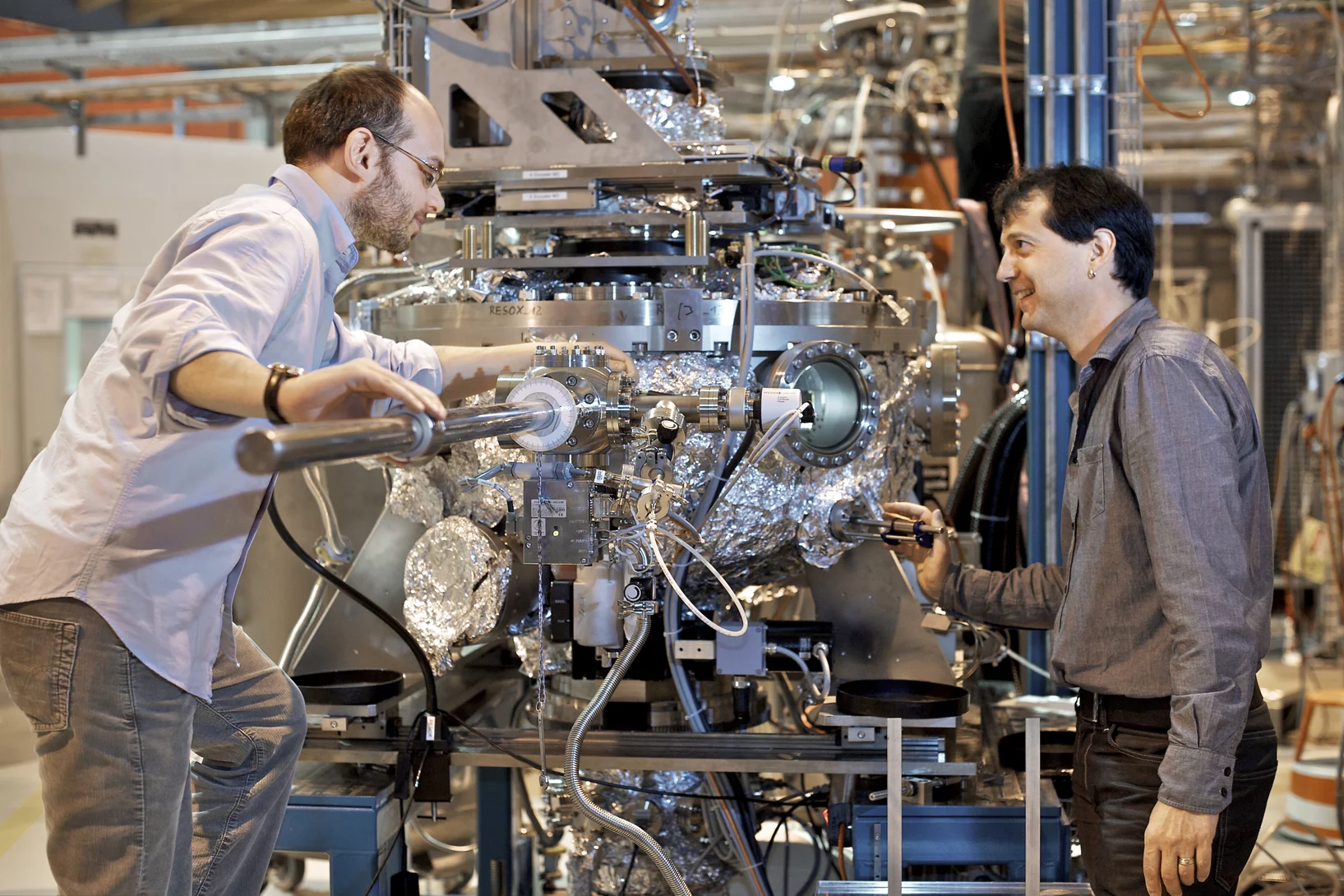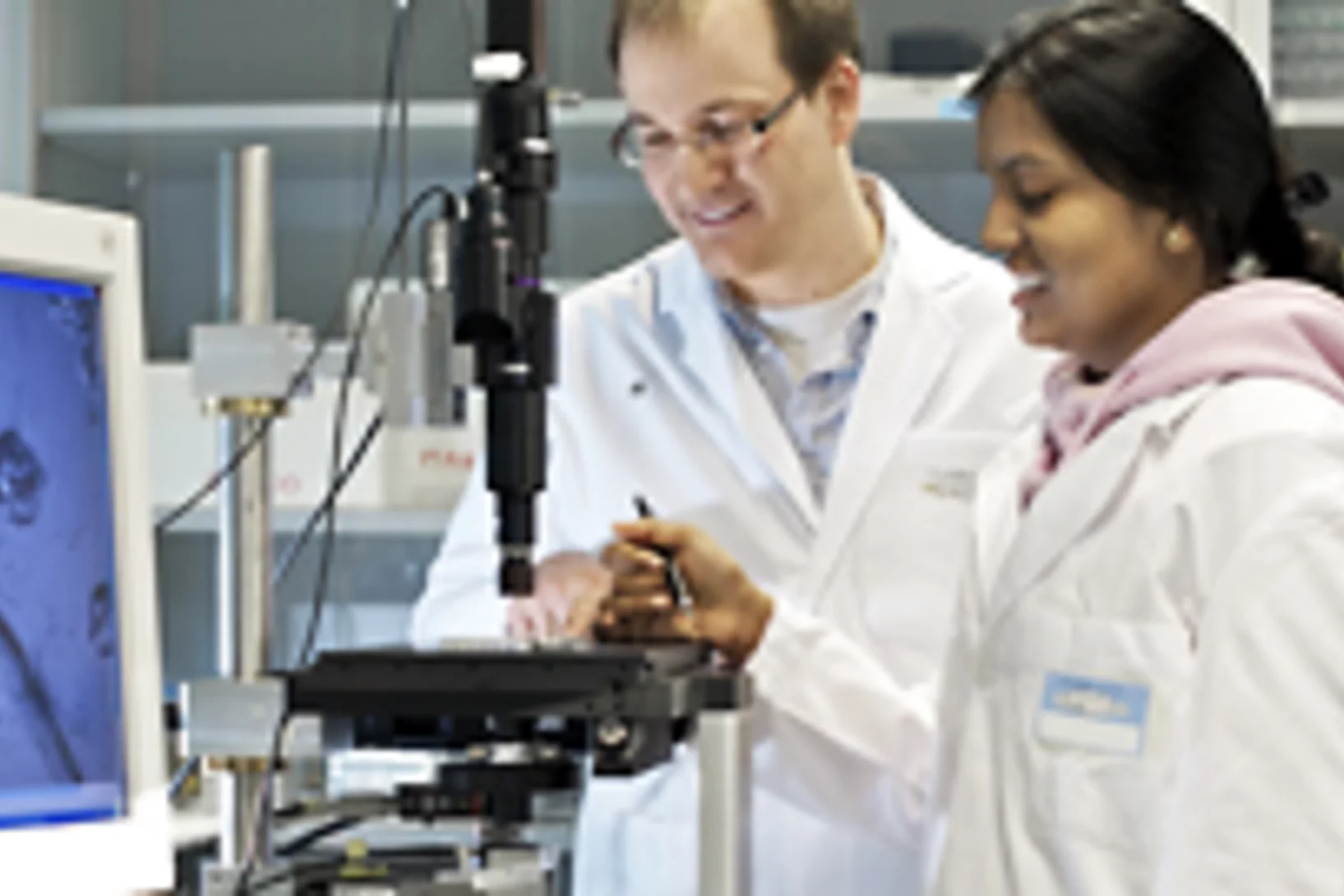Am Paul Scherrer Institut suchen Forschende nach Antworten auf die fundamentale Frage nach den Grundstrukturen der Materie und den fundamentalen Funktionsprinzipien in der Natur. Sie untersuchen Aufbau und Eigenschaften der Elementarteilchen – der kleinsten Bausteine der Materie – oder gehen der Frage nach, wie biologische Moleküle aufgebaut sind und wie sie ihre Funktion erfüllen. Das so gewonnene Wissen öffnet neue Lösungsansätze in Wissenschaft, Medizin oder Technologie.
Mehr dazu unter Überblick Grundlagen der Natur
Nanoforscher untersuchen Karies
Forscher der Universität Basel und des Paul Scherrer Instituts konnten im Nanomassstab zeigen, wie sich Karies auf die menschlichen Zähne auswirkt. Ihre Studie eröffnet neue Perspektiven für die Behandlung von Zahnschäden, bei denen heute nur der Griff zum Bohrer bleibt. Die Forschungsergebnisse wurden in der Fachzeitschrift «Nanomedicine» veröffentlicht.
Nationaler Zukunftstag erstmals auch für Knaben
Der Nationale Zukunftstag, früher bekannt als Tochtertag, gehört zu den Traditionsanlässen am PSI. Seit diesem Jahr ist der Tag nicht mehr den Mädchen vorbehalten, auch die Jungs sind eingeladen. 40 Mädchen und 50 Knaben begleiteten am Donnerstag, 10. November 2011 ihre Eltern zur Arbeit in die Labors, Experimentierstationen, Werkstätten und Büros. Sie nutzten die Gelegenheit, Vater oder Mutter einmal bei der Arbeit über die Schulter zu schauen.
Bilayer manganites reveal polarons in the midst of a metallic breakdown
The origin of colossal magnetoresistance (CMR) in manganese oxides is among the most challenging problems in condensed- matter physics today. The true nature of the low-temperature electronic phase of these materials is heavily debated. By combining photoemission and tunnelling data, we show that in the archetypal bilayer system La2-2xSr1+2xMn2O7, polaronic degrees of freedom win out across the CMR region of the phase diagram.
«Facettenauge» liefert Strom
«swisselectric research award 2011»Kostengünstiger Strom aus Sonnenenergie: Der Maschinenbauingenieur Illias Hischier hat einen Sonnenstrahlempfänger entwickelt, der die aufgenommene Energie über eine Gasturbine für die hocheffiziente Stromerzeugung nutzt. Hischier hat den Empfänger als Doktorand an der ETH Zürich in Zusammenarbeit mit dem Labor für Solartechnik am Paul Scherrer Institut entwickelt. Er erhält dafür den «swisselectric research award 2011».
Influence of Methyl Halide Treatment on Gold Nanoparticles Supported on Activated Carbon
Gold particles supported on carbon when subjected to a flow of methyl iodide or bromide redisperse from large ensembles to single atoms and/or dimers of gold. Methyl halide oxidizes gold leading to gradual particle dissolution. The process could be carried out at temperatures as low as 50 °C. The excess of halide could be removed by a post-treatment of the material with 1%H2O/H2, which does not influence the metal dispersion. This remarkable transformation opens the possibility of re-activating gold catalysts that lost their performance due to metal particles sintering.
Schweiz beteiligt sich an Neutronenquelle der Zukunft
Mauro Dell’Ambrogio, Staatssekretär für Bildung und Forschung unterzeichnete heute die Absichtserklärung der Schweiz, sich an der neuen europäischen Neutronenquelle ESS (European Spallation Source) zu beteiligen. Darin bekennt sich die Schweiz zu dem Ziel, die ESS in Lund (Südschweden) zu bauen und verpflichtet sich, am Konzept mitzuarbeiten, in dem der endgültige Plan für die Anlage festgelegt wird. Kurz nach Fertigstellung des Konzepts im Frühjahr 2013 soll die Entscheidung für den Bau der ESS fallen. Die Schweizer Beiträge zur Entwicklung der Anlage werden durch das Paul Scherrer Institut, das langjährige Erfahrung in der Forschung mit Neutronen hat, sowie durch Schweizer Universitäten und die Schweizer Industrie erbracht.
Pflanzen schaffen sich Wasservorrat im Boden
Ein internationales Forschungsteam hat in Experimenten am Paul Scherrer Institut gezeigt, dass der Boden in der Nähe der Wurzel mehr Wasser enthält als weiter weg. Offenbar legen sich die Pflanzen einen kleinen Wasserspeicher an, der ihnen über kürzere Trockenperioden hinweghelfen kann. Die Ergebnisse wurden durch Experimente mit Neutronentomografie möglich.
Zehn Jahre Forschung in der fliegenden Untertasse
Mit einem Festakt hat das Paul Scherrer Institut (PSI) in Villigen (AG) heute an das zehnjährige Bestehen ihrer bedeutendsten Grossforschungsanlage erinnert. Seit der Inbetriebnahme im Sommer 2001 haben Tausende von Forschern aus Hochschule und Industrie an der Synchroton Lichtquelle Schweiz (SLS) qualitativ hochwertige Experimente durchgeführt. Ihre Forschung mündete in über 2000 wissenschaftlichen Publikationen und brachte darüber hinaus einen Nobelpreis sowie eine Vielzahl industrieller Anwendungen hervor.
Direct Observation of Local Mn-Mn Distances in the Paramagnetic Compound CsMnxMg1-xBr3
We introduce a novel method for local structure determination with a spatial resolution of the order of 0.01 Å. It can be applied to materials containing clusters of exchange-coupled magnetic atoms. We use neutron spectroscopy to probe the energies of the cluster excitations which are determined by the interatomic coupling strength J.
Diamanten sind auch des Forschers bester Freund
Einem vom PSI geleiteten Forscherteam ist es gelungen, harte Röntgenlaserstrahlung 100'000-fach zu konzentrieren und so an einem Punkt Röntgenstrahlung zu erzeugen, die so intensiv war wie wohl nirgends zuvor. Als Linsen verwendeten die Forscher winzige Ringstrukturen aus Diamant à dem Material, das am besten dem Röntgenlaserlicht standhält. Diese Entwicklung schafft die Voraussetzung für einen Teil der Experimente am SwissFEL, dem geplanten Röntgenlaser des PSI.
CCN formation mechanism in lower troposphere needs revision
Atmospheric aerosols exert an important influence on climate1 through their effects on stratiform cloud albedo and lifetime and the invigoration of convective storms. Model calculations suggest that almost half of the global cloud condensation nuclei in the atmospheric boundary layer may originate from the nucleation of aerosols from trace condensable vapours, although the sensitivity of the number of cloud condensation nuclei to changes of nucleation rate may be small. Despite extensive research, fundamental questions remain about the nucleation rate of sulphuric acid particles and the mechanisms responsible, including the roles of galactic cosmic rays and other chemical species such as ammonia. Here we present the first results from the CLOUD experiment at CERN.
Klimaforschung am Teilchenbeschleuniger: Beschreibung der Aerosolneubildung muss revidiert werden
Vom Menschen verursachte Aerosole wirken in der Atmosphäre kühlend: Klimaforscher nehmen an, dass sie einen Grossteil des anthropogenen Treibhauseffekts kompensieren. Allerdings müssen sich die Partikel zum Teil in der Atmosphäre erst neu bilden. Diesen bisher kaum untersuchten Prozess nimmt das CLOUD-Experiment am CERN, an dem auch Forscher des Paul Scherrer Instituts beteiligt sind, unter die Lupe. Dabei wurde erstmals ein Teilchenbeschleuniger für die Untersuchung von Vorgängen in der Atmosphäre eingesetzt. Die Ergebnisse zeigen: die Beschreibungen der Aerosolbildung in Klimamodellen muss revidiert werden.
Standort des SwissFEL entschieden
Das Paul Scherrer Institut hat einen weiteren Meilenstein auf dem Weg zur Realisierung seiner neuen Grossforschungsanlage erreicht.Heute stimmte der Grosse Rat des Kantons Aargau der Anpassung des Richtplans zum Siedlungsgebiet in Würenlingen sowie der Anpassung des Nutzungsplans für das dortige Grundwasserschutzareal zu. Das Paul Scherrer Institut PSI freut sich über diesen wichtigen Entscheid auf dem Weg zur Realisierung seiner neuen Grossforschungsanlage SwissFEL (Schweizer Freie-Elektronen Röntgenlaser).
Unseren frühen Vorfahren in den Kopf (und in die Nase) geschaut
Der Umbau des Gehirns und der Sinnesorgane dürfte den Erfolg der Wirbeltiere, eines der grossen Rätsel der Evolutionsbiologie, erklären à so die Aussage einer Arbeit, die heute im Wissenschaftsjournal Nature erschienen ist. Die Forschenden konnten das Rätsel durch Untersuchungen des Gehirns eines 400 Millionen Jahre alten versteinerten Fisches à eines evolutionären Bindeglieds zwischen den heute lebenden kiefertragenden Wirbeltieren und den Kieferlosen.
Neue Methode für die Krebserkennung mit Brustgewebe erprobt
Das Paul Scherrer Institut PSI hat eine neue Methode zur Diagnose von Brustkrebs entwickelt und nun zusammen mit dem Kantonsspital Baden AG erstmals an nicht-konserviertem, menschlichem Gewebe erprobt. Dabei wurde erkannt, dass es mit der neuen Methode möglich sein sollte, Strukturen sichtbar zu machen, die mit der herkömmlichen Mammografie nicht abgebildet werden. Wissenschaftler der Forschungsabteilung des Unternehmens Philips untersuchen derzeit auf Grundlage des vorgestellten Verfahrens den Einsatz in der medizinischen Praxis.
Investigation of a new method for the diagnosis of cancer in breast tissue
Collaboration between research, hospital and industry aimed at transferring innovative procedure into daily practice.
X-Ray Tomography of Water in Operating Fuel Cell
Polymer electrolyte fuel cells (PEFC) convert the chemical energy of hydrogen with a high efficiency (40-70 %) directly into electricity. The product of the overall reaction is water, produced at the cathode of the cell. The interaction of liquid water with the porous structures of the cell is one of the mechanisms in the PEFC that are commonly believed to be key for further optimization with regard to performance, durability and cost.
Non-thermal melting of a charge density wave
We use time-resolved optical reflectivity and x-ray diffraction with femtosecond resolution to study the dynamics of the structural order parameter of the charge density wave phase in TiSe2. We find that the energy density required to melt the charge density wave nonthermally is substantially lower than that required for thermal suppression and is comparable to the charge density wave condensation energy.
Auch Feinstaub altert
Ob fest, gelartig oder flüssig ist entscheidend: Feinstaubpartikel tragen wesentlich zur Luftverschmutzung bei. Durch Reaktionen mit anderen Luftschadstoffen verändern sich diese Partikel mit der Zeit, sie altern. Der Alterungsprozess hängt wesentlich von der Luftfeuchte ab, und damit auch die Auswirkungen von Feinstaubpartikeln auf unsere Gesundheit und unser Klima. Dies zeigen gemeinsame Versuche von Wissenschaftlern des Paul Scherrer Instituts PSI und des Max-Planck-Instituts für Chemie sowie der Universität Bielefeld in Deutschland.
PSI sets world record with 1.4 MW proton beam
The highest average power proton beam in the world was produced on 20th of June in the 590 MeV cyclotron at Paul Scherrer Institut. Extremely low beam losses achieved in this 35 years old veteran cyclotron allowed PSI team of accelerator scientists and engineers to put 1.4 MW beam of protons onto the muon and neutron spallation targets. This beam is used to produce the brightest beam of muons in the world, as well as supply neutrons for the spallation source SINQ.
Gas uptake and chemical aging of semisolid organic aerosol particles
Organic substances can adopt an amorphous solid or semisolid state, influencing the rate of heterogeneous reactions and multiphase processes in atmospheric aerosols. Here we demonstrate how molecular diffusion in the condensed phase affects the gas uptake and chemical transformation of semisolid organic particles. Flow tube experiments show that the ozone uptake and oxidative aging of amorphous protein is kinetically limited by bulk diffusion.
Röntgen-Methode hilft Hirnerkrankungen besser zu verstehen
Ein internationales Forschungsteam hat eine neue Methode entwickelt, mit der man detaillierte Röntgenbilder von Hirngewebe erstellen kann. Die Methode wurde verwendet, um die Myelinscheide der Nervenfasern sichtbar zu machen. Schäden an der Myelinscheide führen zu verschiedenen Erkrankungen wie etwa Multiple Sklerose. Die Anlage, an der diese Aufnahmen erstellt werden können, wird an der Synchrotron Lichtquelle Schweiz SLS des Schweizer Paul Scherrer Instituts betrieben.
Der Unterschied zwischen dünn und sehr dünn
Materialforschung in neuer DimensionViele Materialien haben eine spezielle kristalline Struktur à ihre Atome sind übereinander in Schichten angeordnet. Ein deutsch-schweizerisches Forscherteam hat zum ersten Mal präzise beobachtet, wie die physikalischen Eigenschaften einer Substanz von der Zahl dieser Schichten abhängen. Dass sich die physikalischen Charakteristika nun auch auf diese Weise kontrollieren lassen, eröffnet neue Möglichkeiten, Stoffe zu identifizieren, aus denen die Computerchips der Zukunft gemacht sein könnten.
Physiklaboranten bremsen Raser aus
Fachhochschule und PSI freuen sich über die gemeinsame ArbeitDie Physiklaborantenlernenden Severin Jörg und Mathias Graf vom Paul Scherrer Institut PSI und ihr Berufskollege Thomas Rastija von der NTB Interstaatliche Hochschule für Technik in Buchs (SG) haben eine kleine Box entwickelt, die Geschwindigkeitsexzesse mit dem Auto verhindert. Das mittlerweile patentierte und von Schweizer Jugend forscht mit hervorragend ausgezeichnete Projekt heisst Setomat und ist das Resultat der Berufsmaturitätsarbeit des aufgeweckten Trios.
Observation of Orbital Currents in CuO
Although high-temperature (Tc) superconductivity was discovered in the cuprates 25 years ago, there is still no consensus on its microscopic origin.
X-ray methods help to understand brain disorders better
An international team of researchers from Denmark, Germany, Switzerland and France has developed a new method for making detailed X-ray images of brain tissue, which has been used to make the myelin sheaths of nerve fibres visible. Damage to these protective sheaths can lead to various disorders, such as multiple sclerosis. The facility for creating these images of the protective sheaths of nerve cells is being operated at the Swiss Light Source (SLS), at the Paul Scherrer Institute.
The electron torus can help us to understand high-temperature superconductors
Paul Scherrer Institute researchers prove, for the first time, the existence of toroidal currents in solids
Golden Idea Award der IDEE-SUISSE an Aldo Steinfeld
Für seine Arbeiten zur Erzeugung von Syngas aus Kohlendioxid und Wasser mithilfe konzentrierter Sonnenenergie erhält Aldo Steinfeld, Leiter des Labors für Solartechnik am Paul Scherrer Institut und Professor für Erneuerbare Energieträger an der ETH Zürich, den Golden Idea Award der IDEE-SUISSE, der Schweizerischen Gesellschaft für Ideen- und Innovationsmanagement. Syngas ist eine Vorstufe verschiedener flüssiger Treibstoffe.
Grundstrukturen des Sehens entschlüsselt
Am Anfang des Sehvorgangs steht die Wechselwirkung des Lichts mit dem Protein Rhodopsin. Dieses enthält den eigentlichen Lichtsensor, der angeregt wird, seine Form zu verändern und so den Rest des Vorgangs anzustossen. Forscher haben die Struktur des Rhodopsinmoleküls in dem kurzlebigen angeregten Zustand bestimmt und so ein genaues Bild der ersten Stufe des Sehvorgangs geliefert.
PSI-Feriencamp 2011
Suchen Sie für Ihr Kind ein spannendes Angebot während den Sommerferien? Möchten Sie in ihm die Neugier und Begeisterung für naturwissenschaftlich-technische Themen wecken? Die Berufsbildung und das Komitee für Chancengleichheit führt dieses Jahr zum achten Mal das PSI-Feriencamp durch!

